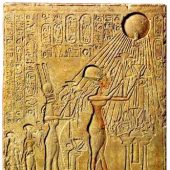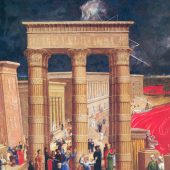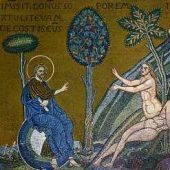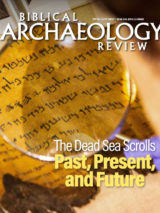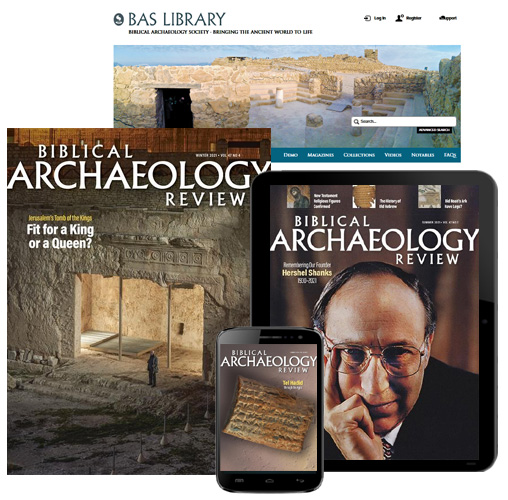Trove of Assyrian Clay Tablets Unearthed in Iraqi Kurdistan
Fruits of Iraqi Kurdistan’s archaeological renaissance

University of Tübingen archaeologists working at a Bronze Age site in Iraqi Kurdistan discovered a trove of Assyrian clay tablets. Photo: Peter Pfälzner, University of Tübingen.
Prior to the summer of 1990, archaeology in Iraq was experiencing a period of great optimism. Archaeological investigation was burgeoning up and down the Tigris and Euphrates and throughout surrounding plains by teams from across the globe. In the wake of the war between Iraq and Iran, archaeologists were finally allowed to re-enter one of the most historically intriguing regions in the world. Primed with new questions and groundbreaking techniques and approaches, archaeology was ready to return to the heartland of Mesopotamia.
In northern Iraq, however, travel, tourism, and archaeology remained largely prohibited. In the Kurdistan region, the government in Baghdad forbade archaeological research; the 1980s were a time of extraordinary turmoil in the northern Kurdistan territories.
When Iraq invaded Kuwait in August 1990, archaeology came to a halt for nearly two decades. Conflict and warfare prevented archaeologists from investigating this historically rich and culturally diverse land.
Beginning in 2008, conflict settled and violence abated, especially in the northern Kurdish region. For the first time in decades, archaeological teams began to return to the plains and highlands of northern Iraq. Few attempts had been made by Kurdish archaeologists over the past years to excavate and survey the region. The landscape was a blank slate for archaeological pursuits, and archaeologists from all over were armed with curiosity and innovative methodological approaches.
Jason Ur, Professor of Anthropology at Harvard University and Director of the University’s Center for Geographic Analysis, has since 2012 directed the Erbil Plain Archaeological Survey—one of many survey and excavation projects initiated since 2009 in order to explore the distinct cultural history of Kurdish Iraq. Ur says we are in a new age of optimism about archaeology in Iraq—a renaissance, so to say, not seen since before the Gulf War.
In a country with such diverse ethnic and religious distinctions and a complex history of compatibility, archaeology “could be the source of great national pride, and a basis for a deeper cultural identity,” said Ur in his recent article “The Archaeological Renaissance in the Kurdistan Region of Iraq” in the journal Near Eastern Archaeology.1 The exploration of the past is no mere fulfillment of archaeological curiosity but carries with it larger implications for cultural reconciliation and new experiences for pride, identity, and peace.
Archaeological projects have already begun to reveal fascinating and noteworthy discoveries.
From Babylon to Baghdad: Ancient Iraq and the Modern West examines the relationship between ancient Iraq and the origins of modern Western society. This free eBook details some of the ways in which ancient Near Eastern civilizations have impressed themselves on Western culture and chronicles the present-day fight to preserve Iraq’s cultural heritage.

The archaeologists unearthing the vessel containing the Assyrian clay tablets. Photo: Peter Pfälzner, University of Tübingen.
In 2013 a team of archaeologists led by Professor Peter Pfälzner from the Institute for Ancient Near Eastern Studies at the University of Tübingen discovered a Bronze Age settlement in the village of Bassetki. Despite anxieties amid the recent Kurdish independence referendum, excavation continued with fruitful results.
The team uncovered a cuneiform archive containing 93 Assyrian clay tablets dating to around 1250 B.C.E., the Middle Assyrian Empire. The collection was discovered in a ruined room in a Middle Assyrian building, and many of the tablets had been stored in a ceramic vessel, perhaps for safekeeping. The vessel itself appears to have been wrapped in a thick clay mantle and hidden away. Pfälzner postulates that this was done intentionally: “Perhaps the information inside it was meant to be protected and preserved for posterity,” Pfälzner said in a University of Tübingen press release.
Deciphering the Assyrian clay tablets is already underway back at the Institute in Tübingen, but doing so will prove incredibly difficult. Sometimes, clay tablets are fired when the building in which they are housed catches fire and burns to the ground, thus preserving them; this does not appear to be the case at Bassetki. These particular tablets are unfired, meaning the clay is more susceptible to deterioration and physical wear. In antiquity, clay tablets would often be left unfired by scribes so they can simply ‘erase’ the inscription and reuse the tablet, much like how we would use a chalkboard.
Already scholars have hypothesized about the content of the large collection of tablets. Pfälzner suggests that the archive could have contained records of anything from economic transactions to historical tales. Philologist Dr. Betina Faist who deciphered a fragment of one of the tablets says it mentions the goddess Gula, perhaps suggesting a religious context of the archives. The excavation team used Reflectance Transformation Imaging (computer-aided photography) to capture the texture of the tablets in various lights in order to more accurately read the cuneiform inscriptions.
Pfälzner and his team also excavated a layer dating to the little-explored Mitanni Period (c. 1550–1300 B.C.E.). Two commercial cuneiform tablets from this stratum suggest that in the second millennium, Bassetki was a major international trade city between Mesopotamia and Anatolia.
The recent discoveries at Bassetki are fantastic contributions to the understanding of the culture and history of the Mitanni and Middle Assyrian periods. They also exemplify the importance of the archaeological renaissance in the Kurdish region of Iraq. After decades of minimal to no archaeological exploration, the fascinating cultural heritage of the region is finally coming to light.
Samuel Pfister is an intern at the Biblical Archaeology Society.
Notes:
1. Jason Ur, “The Archaeological Renaissance in the Kurdistan Region of Iraq,” Near Eastern Archaeology, vol. 80, no. 3 (September 2017), p. 178. Ur will be chairing three panels on the archaeology of Kurdistan at the American Schools of Oriental Research conference in Boston, MA, November 15–18, 2017.
Related reading in Bible History Daily:
10 Things to Know About the Assyrian Empire
The Kani Shaie Archaeological Project
Investigating Early Bronze Age Kurdistan
by Steve Renette, André Tomé and Ricardo Cabral
Long-Lost Temple of Haldi Found in Iraqi Kurdistan?
Mesopotamian “Receipts” Illuminated by 3D Technology
Hanging Gardens of Babylon … in Assyrian Nineveh
Joseph and Esarhaddon of Assyria
The Decline of the Neo-Assyrian Empire
Ancient Clay Tablet Offers New Insights into the Gilgamesh Epic
Must-Read Free eBooks
Want more Bible history?
Sign up to receive our email newsletter and never miss an update.
All-Access Pass
Dig into the world of Bible history with a BAS All-Access membership. Biblical Archaeology Review in print. AND online access to the treasure trove of articles, books, and videos of the BAS Library. AND free Scholar Series lectures online. AND member discounts for BAS travel and live online events.
Subscribe Today